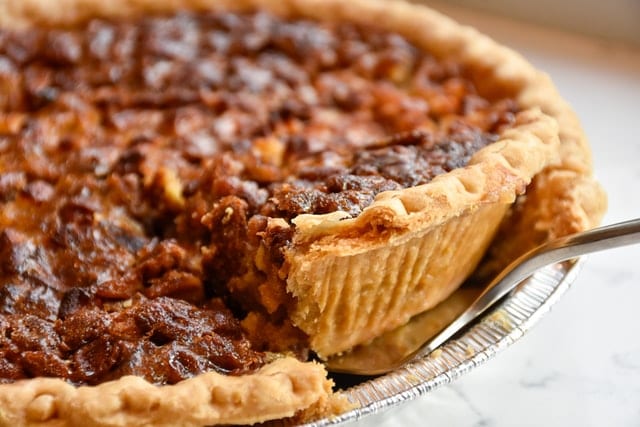 The Thanksgiving day feast is a great place to consider the impact that our diets have on water resources. It takes water to produce just about everything on the table, and the hidden water footprint for many ingredients can be pretty surprising. In this post, we’ll not only explore how much water goes into traditional Thanksgiving dishes, but share a new Water Footprint Calculator (link below!) that you can download and use to calculate your specific meal’s water footprint.
The Thanksgiving day feast is a great place to consider the impact that our diets have on water resources. It takes water to produce just about everything on the table, and the hidden water footprint for many ingredients can be pretty surprising. In this post, we’ll not only explore how much water goes into traditional Thanksgiving dishes, but share a new Water Footprint Calculator (link below!) that you can download and use to calculate your specific meal’s water footprint.
Gobbling Up Water: Raising Turkeys
Consider the star of many traditional Thanksgivings: the turkey. You’d expect that the turkey needs a certain amount of water to drink throughout its life in order to grow to maturity, but drinking water is actually a small percentage of the water footprint of a turkey. The farmer uses water to clean equipment and living spaces. Water is used during butchering and meat processing, as well in the production of packaging materials. By far the largest source of hidden water is turkey feed like corn, wheat, oats, and millet. These crops need space, rain, irrigation, and processing, all of which requires additional water. In the United States, it takes about 266 gallons of water to raise one pound of turkey. Add ingredients like salt, lemon, or garlic, and the water footprint of the centerpiece dish increases.
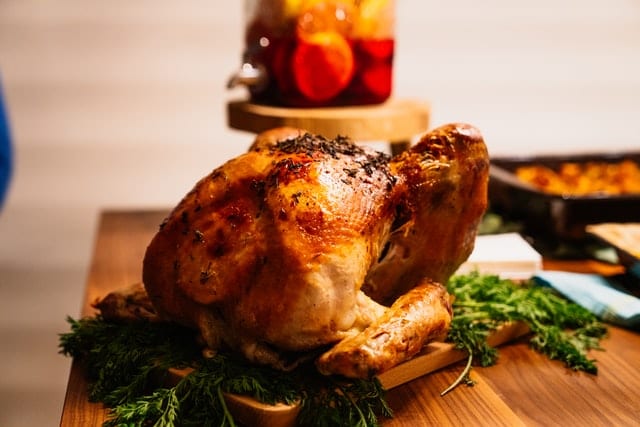
In fact, many common Thanksgiving foods often have large water footprints. Here are water footprints for a variety of dishes you may see on your holiday table:
- Roasted 15 pound turkey with herb butter: 4330 gallons of water
- Bowl of mashed potatoes with butter: 275 gallons
- Green bean casserole with fried onions on top: 547 gallons
- Dinner rolls (24): 585 gallons
- Pecan pie: 1086 gallons
- Glass of wine: 36 gallons
- Glass of milk: 49 gallons
This year’s menu may not look like a Norman Rockwell painting for you and your loved ones, as families everywhere will be redefining their traditional family feast. Whether a smaller get-together calls for a smaller turkey, or the fowl centerpiece is replaced with a lasagna or curried dal, we will all be reconsidering recipes for a COVID Thanksgiving.
Water Footprint Calculator for the Home Chef
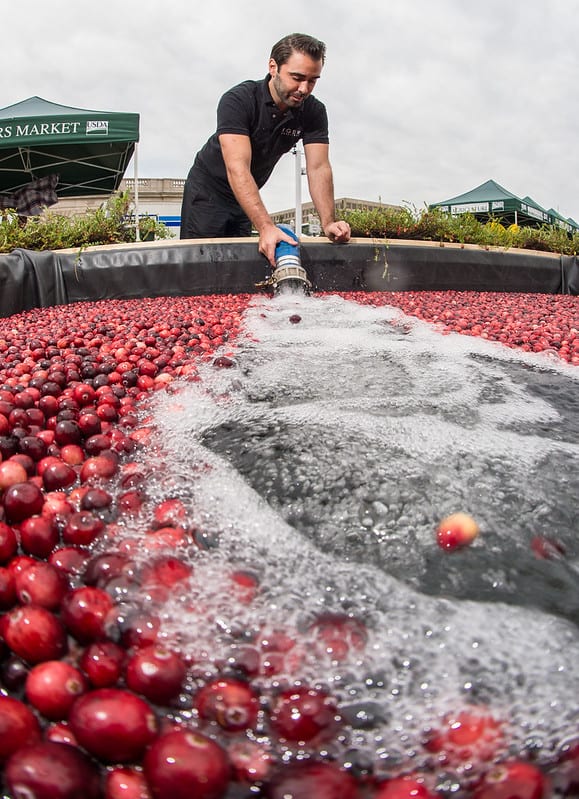
If you’d like to determine the water footprint of your own unique holiday feast, download and use this Water Footprint Calculator to measure your impact. The data is from waterfootprint.org, who calculated the hidden water for hundreds of products around the world. This spreadsheet lists ingredients that you might find on your own shopping list this Thanksgiving, whether the grocery list contains cranberries and turkey or pasta and curry. Just enter the quantities of each ingredient from your recipe into the sheet, and the calculator tallies your total.
We’ve used the footprinting tool to calculate the water usage for a couple PopEd staff favorite recipes. For example, my traditional cranberry recipe nets around 163 gallons of water. Here’s the recipe and water footprint:
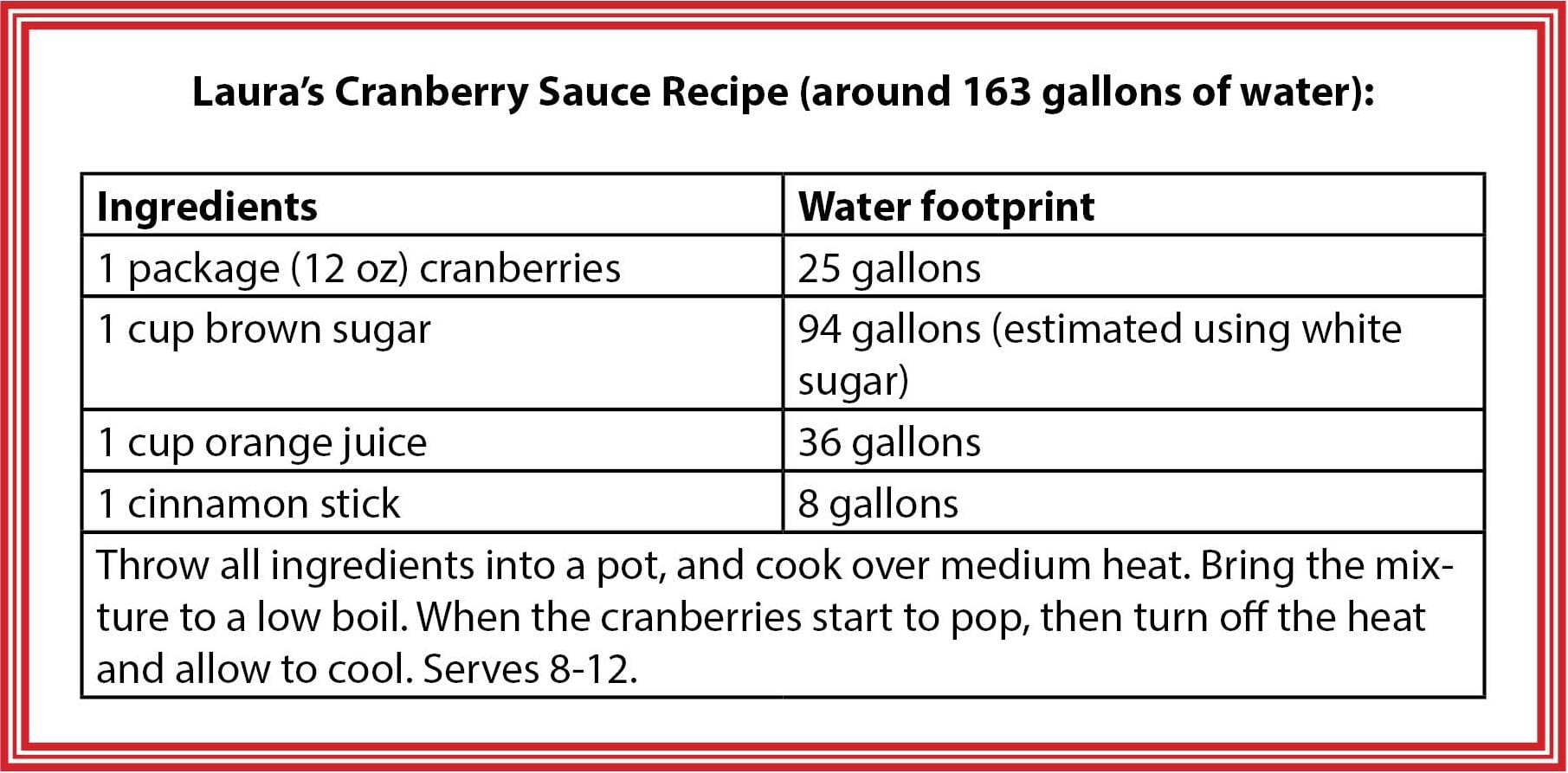
Isabelle’s Ecuadorian Morocho recipe has a water footprint of around 119 gallons using Water Footprint Calculator, and is delicious. Recipe originally from Gimme Yummy Recipes.
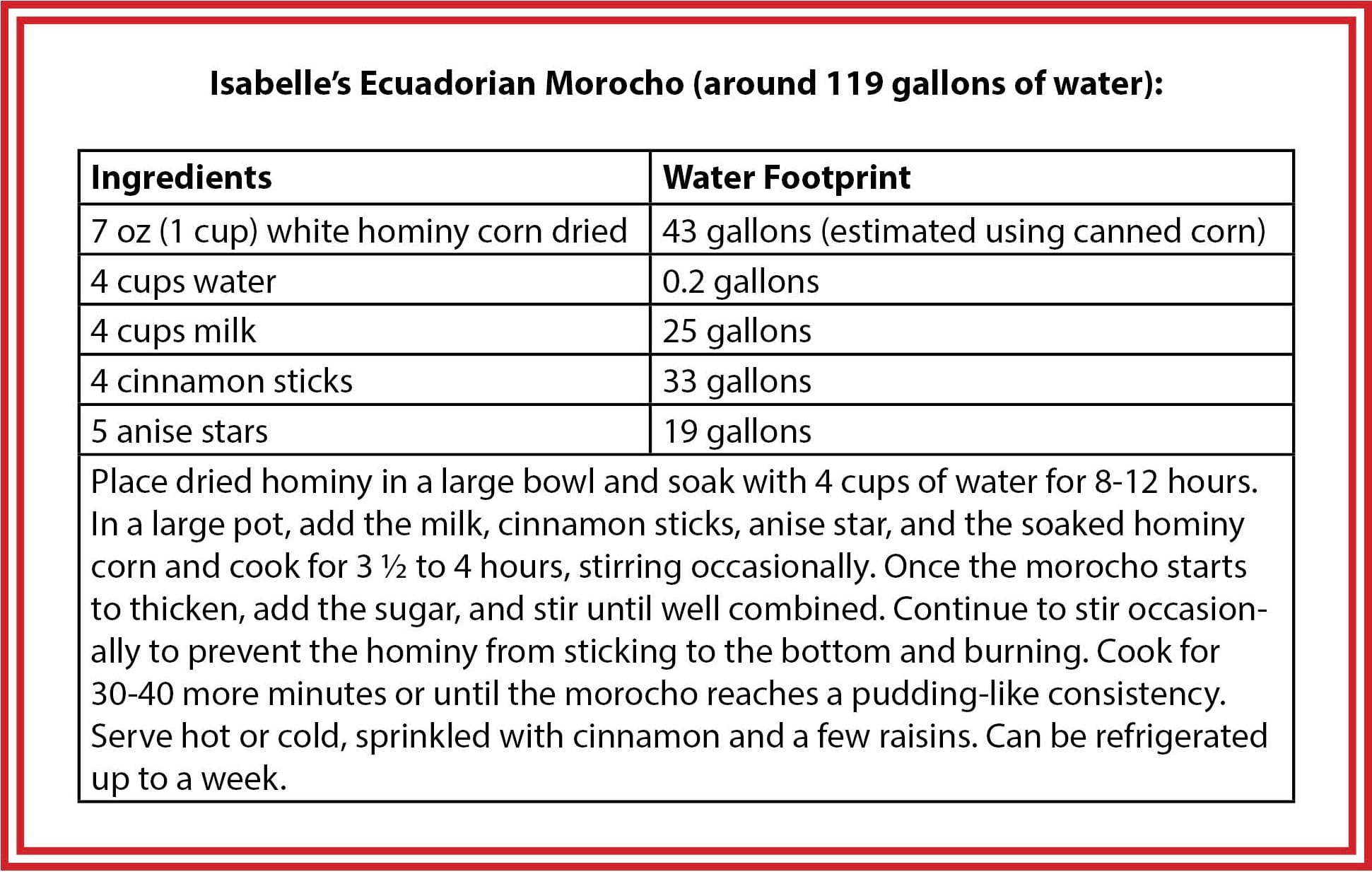
Imani’s Black Eyed Pea Curry nets more than 1008 gallons using the Water Footprint Calculator (“more than” because several ingredients’ footprints aren’t in the calculator). And Grannie Short’s Pumpkin Pie nets a minimum of 532 gallons, though the water footprinting data does not have statistics on a couple of ingredients.
Find the full recipes and water footprints for the Black Eyed Pea Curry and Pumpkin Pie below! Recipes originally from The Post Punk Kitchen and Better Homes & Gardens.
Easy Tips to Lower Your Meal’s Water Footprint
This Water Footprint Calculator also offers some insights for the home chef who hopes to shrink their water footprint. According to this data, a couple simple swaps can have a noticeable impact. For example:
- The fresher and less-processed the meat is, the smaller the water footprint. For example, fresh pork has a smaller footprint than frozen pork, and frozen pork has a smaller footprint than cured ham.
- Beef has the highest water footprint of the meats in the calculator. Pork has a much smaller footprint than beef. Turkey and chicken have even smaller water footprints than pork.
- Tofu has a miniscule water footprint compared to other common proteins on the Thanksgiving table, since tofu is plant-based, and doesn’t require grain feed like turkey.
- The fresher and less-processed the produce is, the smaller the footprint. Fresh green beans use 70 percent of the water than frozen green beans. Fresh garlic uses 25 percent of the water as powdered garlic.
- This Thanksgiving, whatever you eat, take a moment to consider the hidden water. Explore tweaks in your own holiday recipes to lessen your impact. As you celebrate this weekend with loved ones in whatever fashion you’re able, you can be thankful for the positive impact you can have through your meal choices.
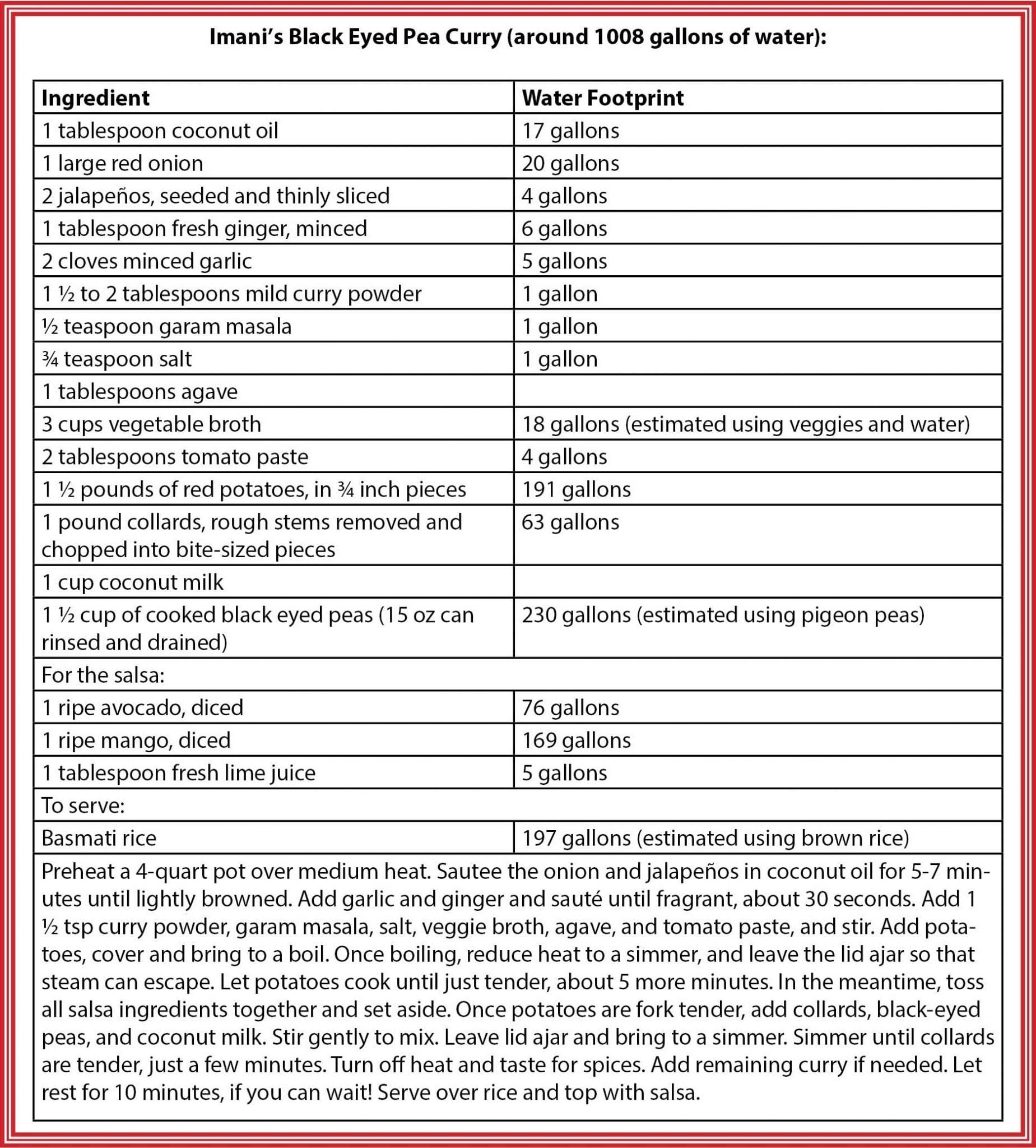
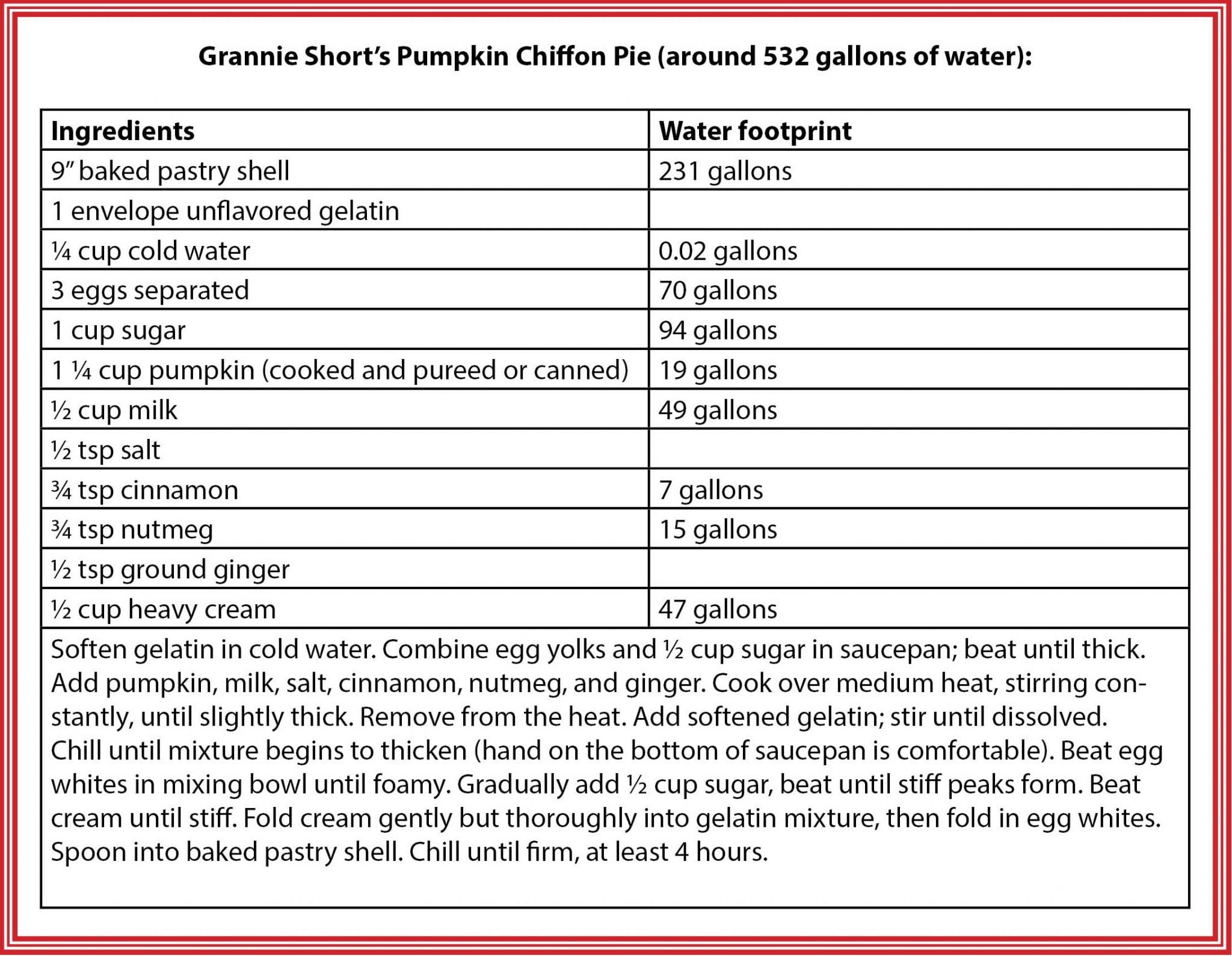
Image credits: Pie (Keighla Exum on Unsplash); Turkey (CH Claudio Schwarz | @purzlbaum on Unsplash); Cranberries (20160916-AMS-LSC-2774 by U.S. Department of Agriculture is Public Domain)




